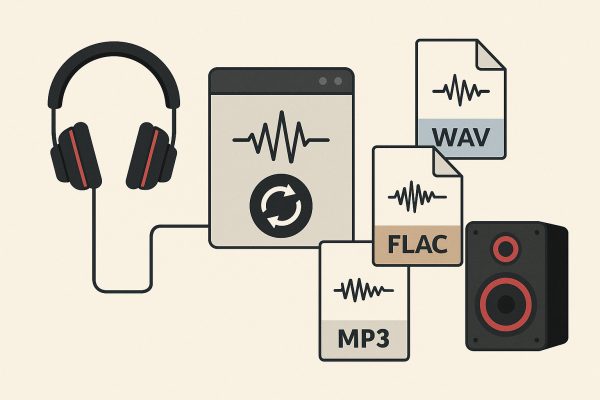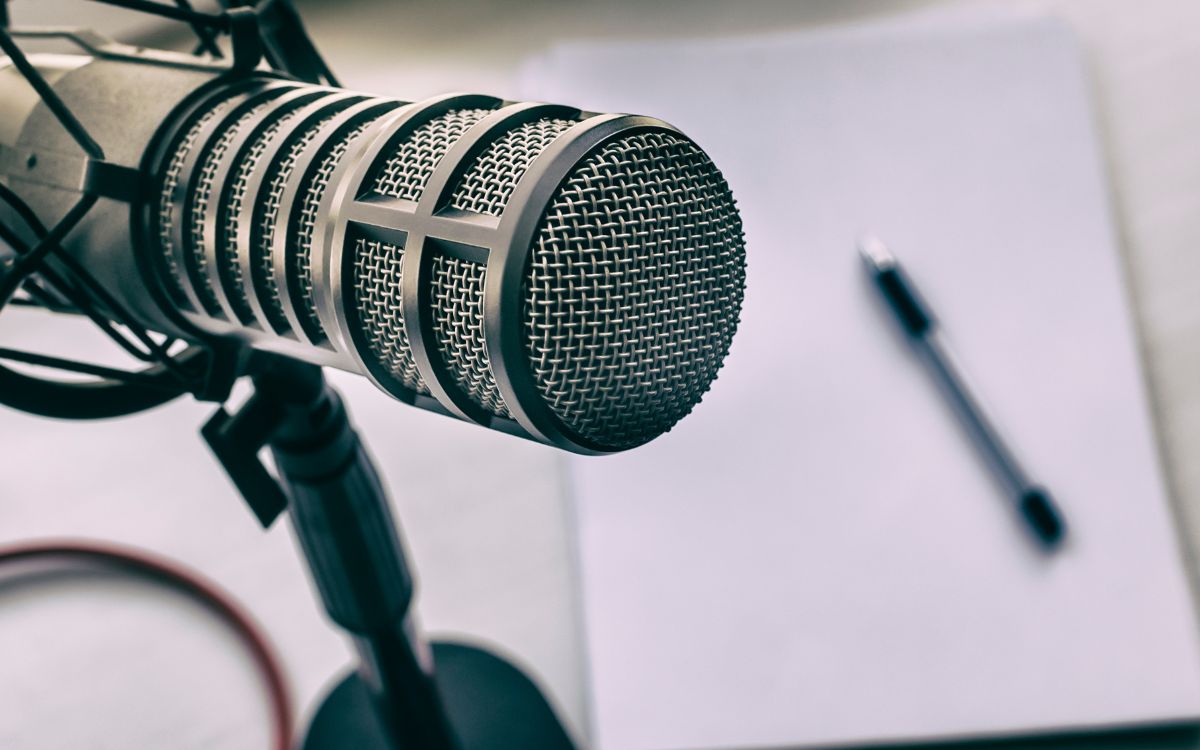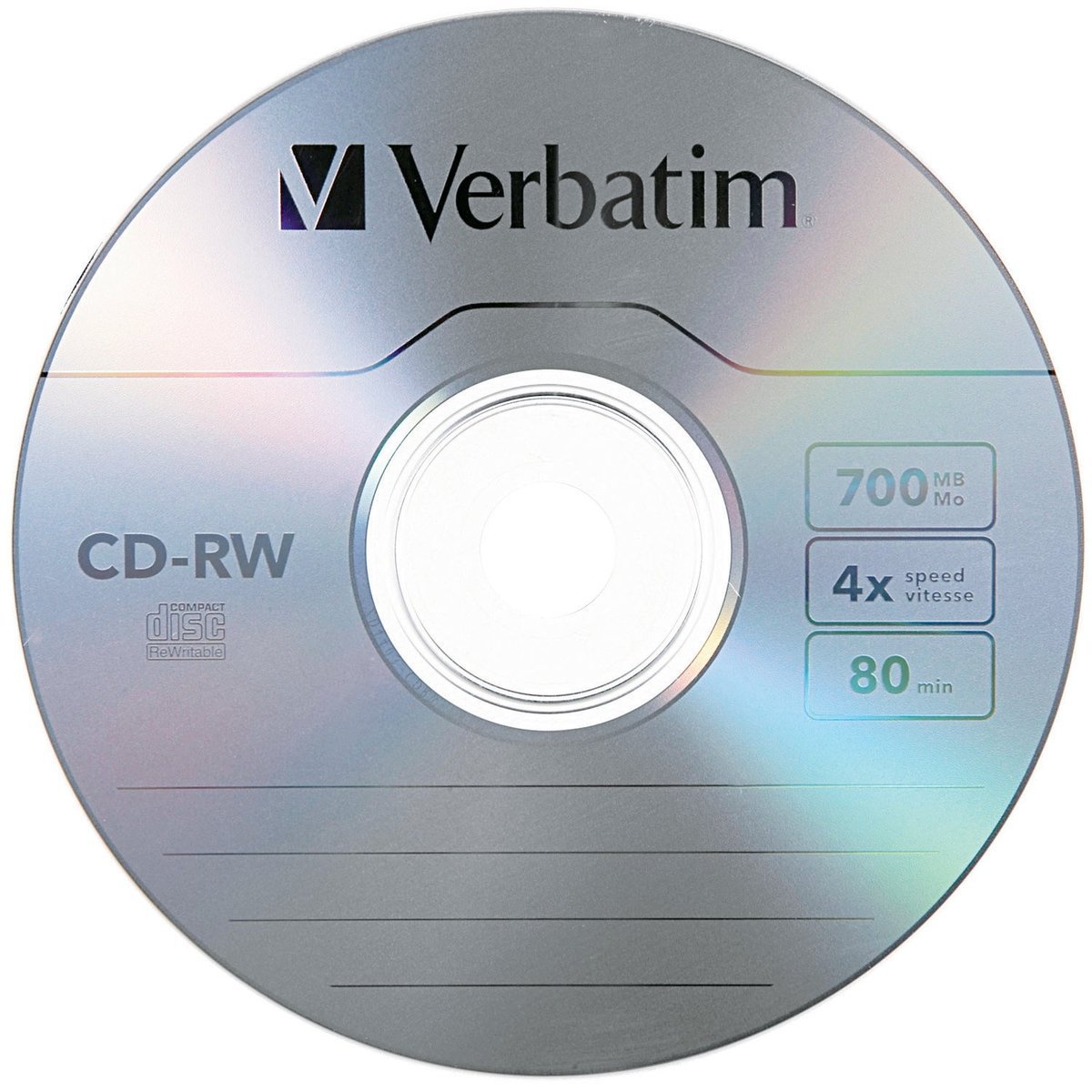Home>Events & Info>Podcast>How To Format A Podcast


Podcast
How To Format A Podcast
Modified: February 17, 2024
Discover the best way to format your podcast with our comprehensive guide. Learn tips and tricks for recording, editing, and promoting your podcast to stand out in the competitive podcasting landscape.
(Many of the links in this article redirect to a specific reviewed product. Your purchase of these products through affiliate links helps to generate commission for AudioLover.com, at no extra cost. Learn more)
Table of Contents
- Introduction
- Choosing the Right Format
- Preparing Your Audio Files
- Setting Up Your Podcast Hosting Platform
- Creating Episode Titles and Show Notes
- Adding Intros, Outros, and Background Music
- Editing and Mixing Your Podcast
- Exporting and Converting Audio Files
- Optimizing Audio Quality
- Adding Metadata and Tags
- Uploading Your Podcast Episodes
- Distributing Your Podcast
- Promoting Your Podcast
- Conclusion
Introduction
Welcome to the world of podcasts! Podcasting has become an increasingly popular medium for sharing knowledge, entertaining audiences, and connecting with like-minded individuals across the globe. With its flexibility and accessibility, podcasts offer a unique platform for content creators to engage with their audiences on a personal level.
Whether you’re a seasoned podcaster or just starting out, one crucial element to consider is how to format your podcast effectively. The way you structure your podcast can greatly impact its success in attracting and retaining listeners. In this article, we’ll explore the key steps to format a podcast, from preparing audio files to distributing and promoting your episodes.
Choosing the right format for your podcast is essential. Consider factors like the genre or topic of your podcast, your target audience, and your personal style. Will you host solo episodes, conduct interviews, or have a co-host? Will your episodes be structured with segments or follow a free-flowing conversational style?
Once you’ve decided on a format, it’s time to prepare your audio files. This involves recording your episodes using professional equipment and software, ensuring high audio quality. Clean audio is crucial for keeping your listeners engaged and coming back for more. Edit your recordings to remove any background noise, glitches, or long pauses, making sure the content flows smoothly.
Next, you’ll need to set up a podcast hosting platform. This is where you will store and distribute your podcast episodes. Choose a reliable hosting service that offers sufficient storage space, bandwidth, and analytics. The hosting platform will generate an RSS feed, which is a key component for making your podcast available on various podcast directories, such as Apple Podcasts and Spotify.
As you upload your episodes, don’t forget to create compelling episode titles and show notes. These serve as a preview of the content and help potential listeners decide if an episode is worth their time. Craft attention-grabbing titles that accurately reflect the episode’s topic and pique curiosity. In your show notes, provide a summary of the episode, highlight key points, and include any relevant links or resources.
To give your podcast a professional touch, consider adding intros, outros, and background music. Intros are short snippets that set the tone for your podcast and introduce the episode. Outros wrap up the episode and can include a call to action or a teaser for the next episode. Background music can add emotion, create transitions, or enhance the overall listening experience. Ensure that the music you use is royalty-free or properly licensed to avoid copyright issues.
Choosing the Right Format
When it comes to podcasting, choosing the right format is crucial for creating a successful and engaging show. The format you choose will depend on various factors, including your content, target audience, and personal style. Let’s explore some popular podcast formats to help you make an informed decision:
- Solo Podcast: Hosting a solo podcast involves recording episodes where you, as the host, share your insights, stories, and expertise with your audience. This format allows for complete control over the content and provides a platform to showcase your unique perspective.
- Interview Podcast: Conducting interviews is a common format in podcasting, where you invite guests to share their knowledge and experiences. This format allows for dynamic conversations, diverse perspectives, and the opportunity to feature experts in your field.
- Co-Hosted Podcast: Co-hosting a podcast involves collaborating with a partner or a group of individuals to create and host episodes together. This format allows for lively discussions, different points of view, and shared responsibilities in producing the show.
- Narrative or Storytelling Podcast: This format is perfect for captivating storytelling, where you weave together a narrative or explore a specific theme in each episode. It involves using sound effects, music, and dramatic storytelling techniques to engage and immerse your audience.
- Panel or Roundtable Podcast: In a panel or roundtable format, you bring together a group of experts or enthusiasts to discuss specific topics or current events. This format encourages lively debates, different perspectives, and the opportunity to provide your audience with multiple viewpoints.
When selecting a format, consider what aligns best with your content and your target audience’s preferences. Think about your strengths as a host and how you can leverage them in each format. It’s also worth considering the practical aspects, such as the availability of guests for interviews or the dynamics of co-hosting with others.
Remember, regardless of the format you choose, focus on providing value to your listeners. Tailor your content to their interests and needs, and strive to deliver engaging and informative episodes consistently.
Preparing Your Audio Files
When it comes to podcasting, ensuring high audio quality is essential to captivate and retain your listeners. There are several steps involved in preparing your audio files to deliver the best possible listening experience:
- Invest in Quality Equipment: Start by acquiring a reliable microphone and headphones. A USB microphone is a popular choice for beginners due to its ease of use and affordability. Pair it with a good pair of closed-back headphones to monitor your recordings.
- Create a Quiet Recording Environment: Find a quiet space to record your episodes. Eliminate background noise by turning off fans, appliances, and other sources of disturbance. Consider using soundproofing materials or a portable sound booth to further reduce unwanted noise.
- Use Recording Software: Choose a recording software that suits your needs. Audacity and GarageBand are popular options for both Mac and PC users. Familiarize yourself with the software and its features to optimize your recording process.
- Maintain a Consistent Recording Setup: Set up your microphone in the same position for each recording session to maintain consistency in audio quality. Experiment with microphone placement and distance to find the best sound for your voice.
- Consider Acoustic Treatment: If you’re serious about podcasting and have the means, consider investing in acoustic treatment for your recording space. This can involve adding foam panels or bass traps to minimize echo and improve sound quality.
- Practice Proper Mic Technique: Avoid plosive sounds (such as “p” and “b” sounds) by using a pop filter or positioning your microphone at a slight angle. Maintain a consistent distance from the microphone to ensure consistent audio levels.
- Record in a Lossless Format: When recording, save your audio files in a lossless format like WAV or AIFF to preserve the highest quality. This will allow for more flexibility during the editing and mixing process.
- Edit Your Recordings: Use audio editing software to clean up your recordings. Remove any background noise, unwanted pauses, or mistakes. Trim any dead air and ensure a smooth flow of content. Add any necessary edits or enhancements to improve the overall quality.
- Normalize and Export: Normalize your audio to ensure consistent volume levels across your episode. Export your final edited episode in a compressed audio format like MP3 or AAC. Aim for a bitrate of 128 kbps to 192 kbps to balance file size and audio quality.
- Listen and Review: Before publishing your episode, listen to it in its entirety. Take note of any remaining issues or areas for improvement. Make any final adjustments or corrections to ensure your audio is polished and ready for your audience.
By following these steps, you can ensure that your podcast episodes are of high audio quality, making them more enjoyable for your audience to listen to and increasing the chances of attracting and retaining listeners.
Setting Up Your Podcast Hosting Platform
Once you have prepared your audio files, the next step is to set up a podcast hosting platform. A podcast hosting platform is where you will store and distribute your podcast episodes, making them accessible to your audience through various podcast directories.
Here are the key steps to setting up your podcast hosting platform:
- Research and Choose a Hosting Service: There are several podcast hosting services available, each with its own features and pricing plans. Research different options and choose a hosting service that best suits your needs. Some popular hosting platforms include Libsyn, Podbean, and Buzzsprout.
- Create an Account: Sign up for an account with your chosen hosting service. Provide the necessary information, such as your podcast’s name, description, and category. Some platforms may require additional details like your podcast’s cover art and other metadata.
- Upload Your Audio Files: Once you’re logged in, you can start uploading your prepared audio files. Most hosting platforms have a straightforward interface that allows you to easily upload your episodes. Make sure to follow any specific file format and size requirements set by the hosting platform.
- Add Episode Details: For each episode you upload, you’ll need to provide details such as the episode title, description, and release date. Write engaging and informative descriptions that accurately represent the episode’s content and entice potential listeners.
- Generate an RSS Feed: Your podcast hosting platform will generate a unique RSS feed for your podcast. The RSS feed is a file that contains information about all your episodes and their associated metadata. This feed is essential for submitting your podcast to various podcast directories.
- Submit to Podcast Directories: Take advantage of podcast directories such as Apple Podcasts, Spotify, Google Podcasts, and Stitcher by submitting your podcast’s RSS feed. Each directory has its own submission process, but it usually involves providing your podcast’s details and the RSS feed URL.
- Review and Update Analytics: Most podcast hosting platforms provide analytics that offer insights into your podcast’s performance. Review these analytics regularly to understand your audience, track download numbers, and identify trends. Use this data to make informed decisions and optimize your podcast.
Setting up a podcast hosting platform is an integral part of launching your podcast and making it accessible to a wide audience. Be sure to choose a reliable hosting service, follow their guidelines for uploading and managing episodes, and leverage podcast directories to expand your reach and connect with listeners.
Creating Episode Titles and Show Notes
When it comes to promoting and attracting listeners to your podcast, compelling episode titles and informative show notes play a crucial role. Episode titles are like headlines that grab the attention of potential listeners, while show notes provide a summary and additional information about your episodes. Here’s how to create effective episode titles and show notes:
- Capture Attention with Episode Titles: Craft episode titles that are catchy, concise, and accurately represent the content of the episode. Consider using intriguing phrases, asking questions, or teasing the topic to pique curiosity and encourage listeners to click and listen.
- Summarize the Episode in Show Notes: Show notes provide a brief summary of the episode’s main points and the topics discussed. This helps potential listeners understand what they can expect from the episode and decide if it aligns with their interests.
- Include Key Takeaways and Timestamps: Highlight the key takeaways or valuable insights from the episode in your show notes. This not only gives potential listeners a preview of the episode’s content but also allows them to navigate directly to specific sections of interest through timestamps.
- Add Relevant Links and Resources: If your episode mentions or discusses specific resources, articles, books, or websites, include links to them in the show notes. This provides additional value to your listeners and encourages them to explore further.
- Mention Guest Bios and Contact Information: If you have a guest on your episode, include a brief bio introducing them and their expertise in the show notes. You can also provide their contact information or website links to help listeners connect with them.
- Utilize Keywords and SEO Optimization: Consider incorporating relevant keywords in your episode titles and show notes to improve their visibility in search engines. This can attract organic traffic and increase the discoverability of your podcast.
- Keep it Concise and Readable: While it’s essential to provide enough information in your show notes, avoid making them overly lengthy or cluttered. Aim for clear and easily scannable paragraphs or bullet points to enhance readability.
- Update Show Notes Regularly: It’s a good practice to update your show notes with any important updates, corrections, or additional resources that may have become available after the episode’s release. This shows that you are actively engaging with your audience and providing them with up-to-date information.
Remember, episode titles and show notes are important tools for enticing potential listeners and providing them with valuable information about your episodes. Take the time to craft engaging titles and informative show notes to make a strong impression and attract a wider audience to your podcast.
Adding Intros, Outros, and Background Music
To give your podcast a professional and polished touch, incorporating intros, outros, and background music is highly recommended. These audio elements can enhance the overall listening experience and make your podcast more memorable. Here’s how you can effectively utilize intros, outros, and background music:
- Intros: An intro is the opening segment of your podcast episode. It sets the tone, introduces your podcast, and hooks the listeners in. Consider creating a short script or conversation that encapsulates the essence of your show. You can include a catchy jingle, a brief overview of the episode, and your podcast’s name. The intro should be engaging and leave the audience excited to dive into the content.
- Outros: An outro is the closing segment of your podcast episode. It provides a smooth transition to the end and leaves a lasting impression on the listener. Consider including a call-to-action, encouraging listeners to subscribe, leave a review, or visit your website. You can also provide a teaser for the next episode, hinting at what’s to come. An outro reinforces your podcast branding and leaves a positive final impression.
- Background Music: Background music can add depth, emotion, and enhance the overall listening experience. It can create transitions between segments, set the mood, or underscore important moments in your podcast. When choosing background music, ensure it complements your content and aligns with the tone and style of your podcast. Make sure to use royalty-free or properly licensed music to avoid copyright infringement.
Intros, outros, and background music contribute to the overall branding and professionalism of your podcast. They establish a recognizable identity and create consistency between episodes. However, it’s important to strike a balance and ensure that these audio elements do not overshadow the main content of your podcast.
To incorporate intros, outros, and background music effectively, follow these steps:
- Choose or Create Audio Files: Browse through libraries of royalty-free music and stock audio sites to find suitable intros, outros, and background music. If you’re skilled in audio production, you can create custom intros and outros using music production software.
- Mix the Audio: Use audio editing software to integrate the audio elements into your episodes. Mix them seamlessly with your main content, ensuring proper volume levels and smooth transitions. Consider fading in and out to create a more professional and engaging experience.
- Update the Metadata: When uploading your episodes to your podcast hosting platform, make sure to update the metadata to include the information about your intros, outros, and background music. This will ensure that all the necessary information is available to your listeners when they access your podcast episodes.
- Regularly Evaluate and Update: Periodically evaluate the effectiveness of your intros, outros, and background music. Consider seeking feedback from your listeners and analyze the engagement metrics to make adjustments and improvements as needed.
By adding intros, outros, and background music, you can create a captivating and immersive experience for your listeners, strengthening your podcast’s brand and helping it stand out in the crowded podcasting landscape.
Editing and Mixing Your Podcast
Once you’ve recorded your podcast episodes, the next step is to edit and mix them to create a polished and professional final product. Editing and mixing involve fine-tuning the audio, removing any mistakes or unwanted elements, and ensuring a smooth and engaging listening experience. Here’s how you can effectively edit and mix your podcast:
- Organize and Import Your Audio Files: Start by organizing your recorded audio files in a dedicated folder on your computer. Import these files into your chosen audio editing software.
- Remove Unwanted Elements: Listen through your recordings and remove any unwanted elements, such as background noise, long pauses, filler words, or mistakes. Use the editing software’s tools to cut and delete these sections, ensuring a seamless flow of content.
- Enhance Audio Quality: Apply audio effects and filters to improve the overall audio quality. Use equalization (EQ) to adjust the frequency balance, compression to even out volume levels, and noise reduction to minimize background noise. Be mindful not to overdo these effects and maintain a natural sound.
- Smooth Transitions: Ensure smooth transitions between different segments or parts of your podcast. Use fades, crossfades, or transitions to blend sections together and avoid abrupt changes that may disrupt the listener’s experience.
- Add Music, Sound Effects, or Jingles: If you plan to include background music, sound effects, or jingles, this is the time to add them. Ensure that the audio levels of these elements are balanced with your main content and do not overpower the overall audio mix.
- Apply Volume Automation: Use volume automation to adjust volume levels throughout your podcast, ensuring consistent audio levels. This can include raising or lowering the volume of individual tracks or sections to create a well-balanced listening experience.
- Prooflisten and Make Final Adjustments: Once you’ve finished editing and mixing your podcast, listen to the entire episode from start to finish. Take note of any additional adjustments or improvements that may be needed, such as removing any remaining glitches or making minor audio enhancements.
- Export Your Final Episode: Once you’re satisfied with the editing and mixing, export your episode as a high-quality audio file. Choose a suitable file format (such as MP3 or AAC) and ensure the audio settings are optimized for online streaming and download.
Editing and mixing your podcast is a crucial step in delivering a professional and engaging listening experience. Take your time to carefully edit your episodes, paying attention to detail and maintaining a high audio quality. By doing so, you’ll create a podcast that stands out and keeps your audience coming back for more.
Exporting and Converting Audio Files
After you have finished editing and mixing your podcast episodes, the next step is to export and convert your audio files into a suitable format for distribution. This ensures that your podcast episodes are properly formatted and optimized for online streaming and downloading. Here’s how you can effectively export and convert your audio files:
- Choose the Right File Format: Select an appropriate audio file format for your podcast episodes. The most commonly used formats for podcasts are MP3 and AAC. MP3 is widely supported and offers good audio quality with manageable file sizes. AAC, often used by Apple devices, provides slightly better quality at lower bit rates.
- Select the Bitrate: Determine the appropriate bitrate for your exported audio files. Bitrate is the amount of data used to represent the audio per second. Higher bitrates generally result in better audio quality but larger file sizes. For podcasts, a bitrate of 128 kbps to 192 kbps is typically recommended to balance quality and file size.
- Export the Final Episode: Use your audio editing software’s export or render feature to export your final edited episode. Choose the desired file format (e.g., MP3 or AAC) and set the desired bitrate. Additionally, ensure that the file’s metadata, such as artist name, episode title, and episode number, is correctly embedded.
- Convert File Sample Rate: If your audio files have a high sample rate, such as 96 kHz or 192 kHz, consider converting them to a standard sample rate of 44.1 kHz. This sample rate is commonly used for podcasts and ensures compatibility with various platforms and devices.
- Check Audio Levels and Format Compliance: Before finalizing the export, double-check that your audio levels are appropriately calibrated and ensure that the exported files comply with the technical specifications outlined by your podcast hosting service or desired podcast directories.
- Quality Assurance: Listen to the exported audio files to make sure they sound as expected and there are no noticeable issues. Pay attention to any artifacts, distortion, or inconsistencies that may have occurred during the export process.
- Archive Your Project: Once your audio files are exported and confirmed to be of good quality, consider backing up your project files, including the raw audio files and the editing session files. Archiving ensures you have a copy of all the necessary files in case you need to make future edits or access the original recordings.
Exporting and converting your audio files correctly is crucial in delivering professional-quality podcasts. By following these steps, you’ll ensure that your episodes are properly formatted, optimized for online distribution, and compatible with various podcast platforms and devices. This allows your audience to enjoy your podcast with ease while maintaining the highest audio quality possible.
Optimizing Audio Quality
Ensuring high audio quality in your podcast is vital for providing an enjoyable listening experience to your audience. Optimizing audio quality involves taking steps to enhance the sound of your recordings and minimize any unwanted noise or artifacts. Here are some tips to help you optimize the audio quality of your podcast:
- Invest in Quality Recording Equipment: Start with a good quality microphone and headphones to capture clear and crisp audio. Consider investing in a microphone that suits your budget and needs, such as a dynamic or condenser microphone.
- Choose an Acoustically Treated Recording Space: Find a quiet and well-isolated room or create a temporary sound booth to minimize external noise and reverberations. Add acoustic treatment to reduce echoes and achieve a cleaner sound.
- Control Background Noise: Eliminate or minimize background noise during recording by turning off fans, air conditioners, or other sources of noise. Consider using a noise gate during the editing process to reduce unwanted noise in the silent parts of your recordings.
- Check Levels and Gain Staging: Properly set the gain and monitor your recording levels to prevent clipping (distorted audio). Use a pop filter to reduce plosive sounds (such as “p” and “b”) and maintain a consistent distance from the microphone to ensure an even audio level.
- Edit to Remove Unwanted Elements: During the editing process, remove any mistakes, background noise, or long pauses to maintain a smooth and engaging flow. Trim any unnecessary parts without compromising the context or content of your podcast.
- Apply Equalization (EQ): Use EQ to enhance the tone and balance of your audio. Correct any frequency imbalances and adjust the levels of different frequencies to achieve a pleasing and well-rounded sound. Be careful not to overdo it and introduce unnatural changes to the audio.
- Utilize Compression: Apply compression to control the dynamic range of your podcast. Compression helps to even out volume levels, making softer sounds more audible and louder sounds more controlled. Adjust the compression settings to preserve the natural dynamics and prevent the audio from sounding too flat.
- Consider Noise Reduction: If there is persistent background noise in your recordings, use noise reduction tools or plugins to reduce or eliminate it. Apply noise reduction cautiously to avoid affecting the quality of your desired audio.
- Listen and Fine-tune: Regularly listen to your edited episodes to identify any remaining audio issues or areas for improvement. Adjust levels, EQ, or other settings as necessary to achieve the desired sound quality.
- Mastering: Consider applying a final mastering process to your podcast episodes. Mastering involves making overall adjustments to the audio to ensure consistency across episodes and optimize the final sound for different listening devices and environments.
By implementing these strategies, you can optimize the audio quality of your podcast and provide your audience with a clear, engaging, and professional listening experience. Remember to strike a balance between enhancing the audio and preserving its natural qualities, ensuring that your podcast maintains authenticity and reflects your unique style and content.
Adding Metadata and Tags
Adding metadata and tags to your podcast episodes is an essential step in organizing and optimizing your content for search engines and podcast directories. Metadata provides important information about your podcast and individual episodes, while tags help categorize and classify your content. Here’s how you can effectively add metadata and tags to your podcast:
- Title: Choose clear and descriptive titles for your podcast episodes. The titles should accurately reflect the content of the episode and be attention-grabbing to encourage listeners to click and listen.
- Description: Craft compelling and informative descriptions for your episodes. Summarize the main points, key takeaways, or guest information. Use relevant keywords naturally in the description to improve search engine visibility and attract your target audience.
- Episode Numbers: Assign unique episode numbers to each of your podcast episodes. These numbers help listeners navigate and keep track of your content. Additionally, podcast directories often require episode numbers for proper organization.
- Date: Include the release date of your episode in the metadata. This helps listeners identify the timeliness of the content and allows them to easily discover your most recent episodes.
- Author/Host: Identify yourself or your podcast as the author or host in the metadata. This attribution helps listeners associate the episode with your brand and establish a connection.
- Explicit Content: If your episode contains explicit language or mature themes, indicate this in the metadata or using explicit content tags. This ensures that your content is appropriately labeled and helps listeners make informed choices.
- Tags: Use relevant tags or keywords to categorize and classify your podcast episodes. Think about the main topics, themes, or guests featured in each episode and assign appropriate tags. This aids discoverability and helps potential listeners find your podcast when searching for related content.
- Artwork: Your podcast artwork serves as a visual representation of your podcast. Ensure that your artwork meets the required specifications of podcast directories. Use high-resolution images that accurately reflect the branding and essence of your podcast.
- Episode Transcripts: Optional but beneficial, providing episode transcripts can offer additional accessibility and improve search engine optimization. Transcripts make your content searchable and allow listeners to read along or easily reference specific parts of your episodes.
- Metadata Consistency: Maintain consistency in your metadata across all platforms and directories. Ensure that your titles, descriptions, and tags accurately represent your episode content and align with your podcast branding.
Adding metadata and tags helps optimize your podcast for search engines and improves the discoverability of your episodes. Taking the time to thoughtfully craft accurate and engaging metadata can greatly increase your podcast’s visibility and attract a wider audience. Regularly review and update your metadata as needed to keep it up-to-date and relevant.
Uploading Your Podcast Episodes
Once you have edited and finalized your podcast episodes, the next step is to upload them to your chosen podcast hosting platform. Uploading your podcast episodes correctly ensures that they are accessible to your audience through various podcast directories. Here’s how you can effectively upload your podcast episodes:
- Choose a Reliable Podcast Hosting Platform: Select a podcast hosting platform that meets your needs in terms of storage space, bandwidth, analytics, and distribution capabilities. Popular hosting platforms include Libsyn, Podbean, and Buzzsprout.
- Create an Account: Sign up for an account with your chosen podcast hosting platform. Provide necessary information such as your podcast’s name, description, and category. Some hosting platforms may require additional details like your podcast’s cover art and RSS feed information.
- Prepare Your Episode Files: Ensure that your podcast episode files are in the correct format and optimized for online streaming and downloading. Convert them to the appropriate file format, such as MP3 or AAC, with recommended settings like a suitable bitrate for audio quality.
- Organize Your Episodes: Arrange your podcast episodes in a logical order, such as by release date or episode number. This organization helps listeners navigate through your content easily.
- Upload Your Episodes: Use the podcast hosting platform’s interface to upload your episode files. Follow the instructions provided to ensure proper uploading and make sure you select the correct options for publish dates, episode titles, and descriptions.
- Add Episode Metadata: Provide the required metadata for each episode, such as the episode title, description, release date, and duration. Make sure the metadata accurately represents the content of the episode and aligns with your podcast’s branding.
- Check Audio Quality: Before finalizing the upload, double-check the audio quality of your episodes. Listen to each episode to ensure there are no technical issues, such as audio artifacts, weird noises, or inconsistencies in volume levels.
- Save and Publish: Save your changes and publish your episodes on the podcast hosting platform. Depending on the platform, you may have the option to publish immediately or schedule the release of your episodes for a future date and time.
- Preview and Verify: Take advantage of any preview function provided by the hosting platform. Verify that your episodes appear as intended, with properly formatted titles, descriptions, and artwork. Check that the episode order is correct and that all metadata is accurate.
- Test the RSS Feed: Ensure that your podcast’s RSS feed is working correctly. Test the feed using podcast directories’ validation tools or special RSS feed validators. This ensures that your podcast episodes will be properly distributed and available on different podcast platforms.
Uploading your podcast episodes correctly is crucial for making them available to your audience. Take the time to follow each step carefully to ensure that your episodes are properly formatted, organized, and ready to be distributed to podcast directories. Regularly review and update your episode uploads as you release new content to keep your podcast library up-to-date and engaging for your listeners.
Distributing Your Podcast
Once you have uploaded your podcast episodes to your hosting platform, the next step is to distribute your podcast and make it available on various podcast directories. Distributing your podcast effectively ensures that it reaches a wider audience and increases its discoverability. Here’s how you can effectively distribute your podcast:
- Submit to Podcast Directories: Submit your podcast’s RSS feed to popular podcast directories such as Apple Podcasts, Spotify, Google Podcasts, and Stitcher. Each directory has its submission process, usually requiring details about your podcast, its genre, cover art, and the RSS feed URL.
- Optimize your Podcast Description: Craft an engaging and keyword-rich podcast description to attract potential listeners. Use relevant keywords to improve your podcast’s visibility in search results on podcast directories and search engines.
- Promote on Social Media: Leverage social media platforms to promote your podcast. Create social media profiles for your podcast and share new episode releases, behind-the-scenes content, and engage with your audience through comments, likes, and shares.
- Create a Podcast Website: Establish a dedicated website for your podcast. Include information about your podcast, a catalog of your episodes, show notes, and ways for listeners to connect with you. Provide links to your podcast directories and encourage visitors to subscribe.
- Guest on Other Podcasts: Actively seek opportunities to be a guest on other podcasts in your niche. This helps you reach new audiences and potentially attract listeners who are interested in your expertise or topic.
- Utilize Email Marketing: Build an email list of your loyal listeners and use email marketing to notify them about new episodes, special announcements, or exclusive content. Offer a simple way for listeners to join your mailing list on your podcast website.
- Collaborate with Influencers and Industry Experts: Partner with influencers or industry experts related to your podcast’s topic or niche. Collaborative episodes or cross-promotion can introduce your podcast to their audience and vice versa.
- Encourage Reviews and Ratings: Ask your listeners to leave reviews and ratings on podcast directories. Positive reviews and high ratings can boost your podcast’s visibility and credibility, attracting more listeners.
- Engage with your Audience: Respond to comments, messages, and emails from your listeners. Engaging with your audience makes them feel valued and encourages them to become loyal fans who spread the word about your podcast.
- Monitor Analytics and Adjust: Track analytics provided by your podcast hosting platform and podcast directories. Analyze listener demographics, episode performance, and engagement metrics to make informed decisions and refine your podcasting strategy as needed.
Distributing your podcast effectively involves a multi-channel approach to reach your target audience and expand your listener base. By utilizing podcast directories, social media, your podcast website, and collaborating with others, you can increase the visibility and reach of your podcast. Engaging with your audience and utilizing various promotion techniques will help you to build a loyal listener base over time.
Promoting Your Podcast
Creating a high-quality podcast is just the first step. To ensure its success, you need to actively promote your podcast and attract new listeners. Effective promotion helps increase visibility, build a loyal audience, and grow your podcast. Here are some strategies to effectively promote your podcast:
- Create Engaging Podcast Artwork: Design eye-catching and professional podcast artwork that reflects the theme and personality of your show. Your artwork is often the first impression potential listeners have of your podcast, so make sure it stands out.
- Optimize Your Podcast Metadata: Utilize appropriate keywords and descriptive language in your podcast title, description, and episode titles. This optimization increases your podcast’s discoverability in search engines and podcast directories.
- Utilize Social Media Platforms: Leverage the power of social media to connect with your audience. Create dedicated profiles for your podcast on platforms such as Facebook, Instagram, Twitter, and LinkedIn. Regularly share updates, episode releases, behind-the-scenes content, and engage with your audience.
- Collaborate with Other Podcasters: Team up with other podcasters in your niche for cross-promotion. This could involve appearing as a guest on their show or featuring them as a guest on your show. Collaborating exposes your podcast to a new audience and helps expand your reach.
- Guest on Other Shows: Seek opportunities to be a guest on podcasts outside of your niche as well. This allows you to introduce your podcast to new audiences and build credibility as an expert in your field.
- Create a Podcast Website: Establish a dedicated website for your podcast. Include information about your show, host profile, an episode library, and ways for listeners to subscribe. Use the website as a hub for all your podcast-related content and promote it through various channels.
- Encourage Listener Reviews and Ratings: Ask your listeners to leave reviews and ratings on podcast directories like Apple Podcasts. Positive reviews and ratings can influence potential listeners’ decisions to tune in and can improve the visibility and credibility of your podcast.
- Utilize Email Marketing: Build an email list of your dedicated listeners and send regular updates about new episodes, special offers, or exclusive content. Encourage listeners to join your mailing list through your podcast website and provide incentives such as bonus episodes or newsletters.
- Participate in Podcast Directories and Awards: Submit your podcast to podcast directories, industry-specific directories, and podcast awards for consideration. Recognition and exposure from these channels can increase your podcast’s visibility and attract new listeners.
- Engage with Your Audience: Respond to comments, messages, and emails from your listeners. Encourage feedback and questions, and actively engage on social media platforms. Building a sense of community and connection with your audience helps foster loyalty and word-of-mouth promotion.
Promoting your podcast requires consistent effort and a multi-faceted approach. Leveraging social media, collaborations, email marketing, and engaging with your audience are effective ways to increase visibility and attract more listeners. Continually analyze and refine your promotional efforts based on feedback and analytics to continuously grow your podcast audience.
Conclusion
Congratulations on delving into the exciting world of podcasting! By following the steps outlined in this guide, you now have a comprehensive understanding of how to format, optimize, and promote your podcast to reach a wider audience. Let’s recap some key takeaways:
Formatting your podcast involves choosing the right format that suits your content, target audience, and personal style. Whether it’s hosting solo episodes, conducting interviews, or having co-hosts, finding the right format sets the stage for a successful podcast.
Preparing your audio files is crucial for delivering high-quality episodes. Invest in quality recording equipment, create a quiet recording environment, and edit your recordings to remove unwanted noise and optimize the flow of content.
Setting up a podcast hosting platform allows you to store and distribute your episodes efficiently. Choose a reliable hosting service, upload your prepared audio files, and add essential metadata to ensure proper organization and accessibility.
Adding intros, outros, and background music adds a professional touch and enhances the listening experience. Craft engaging intros and outros, utilize suitable background music, and ensure that they complement your content without overpowering it.
Edit and mix your podcast episodes to create polished and seamless audio. Remove mistakes and unwanted elements, apply audio effects to enhance quality, and ensure smooth transitions between segments.
Optimizing audio quality is crucial for captivating and retaining listeners. Invest in quality equipment, control background noise, utilize EQ and compression effectively, and regularly review and fine-tune your audio for the best possible sound.
To ensure increased visibility, add metadata and tags to your episodes. Craft compelling titles and descriptions, assign episode numbers, and utilize appropriate tags to categorize and classify your content accurately. This enhances search engine optimization and discoverability.
Uploading your podcast episodes correctly is essential for making them available to your audience. Choose a reliable podcast hosting platform, organize and upload your episodes, and verify that all metadata and audio files are accurate and functional.
Distribute and promote your podcast through various channels. Submit your podcast to directories, engage with social media platforms, collaborate with other podcasters, create a podcast website, and encourage reviews and ratings. Interaction with your audience and effective promotion are key to expanding your listener base.
Remember, podcasting is an ongoing journey. Continuously evaluate and improve your content, engage with your audience, and adapt your promotional strategies. As you refine your skills, foster connections with your listeners, and consistently deliver valuable and engaging episodes, your podcast will have the potential to inspire, entertain, and educate your audience for years to come.











